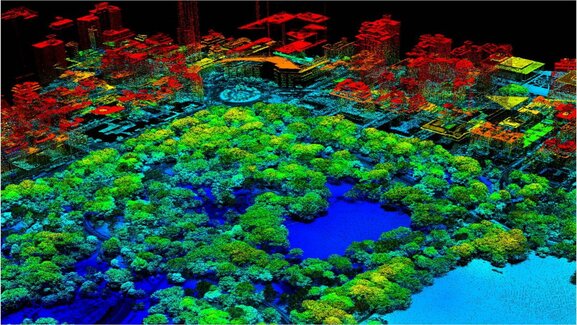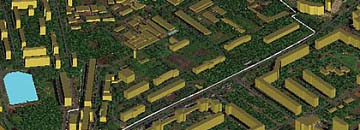Sat-Sun: Non-working days
What is gis terrain analysis
GIS (Geographic Information Systems) terrain analysis involves the examination and interpretation of terrain characteristics using digital elevation models (DEMs) and other geospatial data.What is digital terrain analysis
Digital Terrain Analysis (DTA) leverages digital elevation data and geospatial technologies to assess and interpret terrain characteristics. It involves various computational techniques and tools to analyze surface features, topography, and other aspects of the Earth's surface.Abstract.
Throughout human history, people have continuously explored and settled in new territories on our planet. The Earth's terrain constantly interacts with humans, and its features enable human activities such as agriculture on flatlands, mining valuable minerals in mountainous regions, and the construction of robust engineering structures.
The forms of the Earth's surface determine the distribution and diversity of vegetation and can even shape the microclimate of an area. The terrain of a region is a vital physical-geographical element that influences soil formation processes, the characteristics of above-ground and surface waters, and more. However, terrain has its most significant impact on the structure and layout of road networks, zoning, and territorial planning.
Basic Concepts of Terrain.
To begin the analysis of terrain, let's start by exploring its fundamental concepts and foundations. Terrain is an immaterial component of the natural environment. It reflects the irregularities of the Earth's surface, which are created by endogenous and exogenous processes and consists of relief forms. Three-dimensional perception of terrain is possible when the amplitudes of relative heights exceed the limit of stereopsis, typically around 10-15 meters on average. In such cases, relief elements and forms can be recognized based on direct decryption signs. Small relief forms can be identified by their characteristic plan outlines and patterns (ravines, sand dunes, alluvial cones), which are also considered direct decryption signs. However, in most cases, they are indicated by indirect signs, such as changes in vegetation, soils, and moisture. Overall, the Earth's surface relief is one of the most fully and easily recognizable components in images. Terrain is a relatively stable component of the landscape, which emphasizes the importance of remote sensing methods for relief analysis in solving geodetic, cartographic, ecological, and natural resource assessment tasks. When studying terrain, as well as other components, the valuable properties of satellite images such as large area coverage, generalization capabilities, and multi-zonality come into play.
After covering the basic concepts of terrain, we need to move on to its components. It is these components, forms, and elements of terrain that allow us to analyze the irregularities of the Earth's surface.
The analysis of existing terrain is generally conducted through several points:
-
Evaluation of slope steepness
-
Determination of terrain shape
-
Determination of gradient
-
The steepness of slopes (slope) is calculated by the formula:
I = h/l, where
I - slope in %, ‰ or absolute units;
h - difference in heights between slope points, m;
l - horizontal distance (distance between terrain points), m.
- Terrain forms are extremely diverse. They are classified by size, origin, shape, age, and other characteristics. The main generally accepted terrain forms include mountains (peaks), basins, ridges, valleys, saddles, terraces, ravines, etc.

Fig. 1 Basic terrain forms and elements
Terrain forms, in turn, consist of simpler geometric objects - terrain elements. Terrain elements include edges or surfaces, edges or bends of surfaces, ridges, bottoms, and so on. They are conditionally considered "indivisible," although at large sizes, their components can differ. For example, steep slopes can change slopes, curvature, and segmentation characteristics when moving from ridges to the base. The crests of ridges, edges, and slope bases change angles, sharpness, and plan outlines. In landscape studies, such changes allow for the identification of mono- or polyfacial slopes, floodplain surfaces, terraces, or alluvial cones. Decryption at the appropriate resolution can also highlight these details. If the color of elements and their parts depends on soil-vegetation cover, surface deposits, and moisture, then the tone primarily changes due to the degree of illumination, which depends on exposure, slopes, shooting time, and weather conditions.
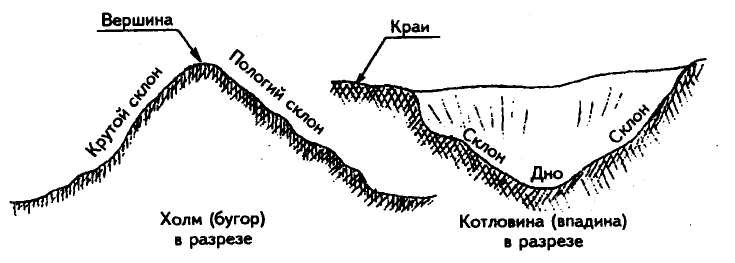
Fig. 2 Elements of hills and depressions
As terrain forms are composed of elements, the characteristics of their decryption are largely analogous to those discussed above. The difference lies in the need to simultaneously recognize a range of elements that, when combined, convey the parameters and characteristics of forms. Recognition features such as plan outlines, stereopsis, and tonal contrasts of elements are crucial.
The variety of terrain forms necessitates the use of scale ranges of satellite images and generalization laws. The analysis of images of different scales shows that in most cases, three types of terrain form images are distinguished:
- Unrecognizable ones that determine the tone structure, with sizes up to 0.1 mm;
- Recognizable but not mappable ones, with sizes from 0.1 to 1.0 mm;
- Recognizable and mappable ones, with sizes larger than 1.0 mm.
|
Processes |
Indicator Forms |
Decryption Features |
|
Gravitational (collapse, landslides) |
Cracks, gullies, pits, or hollows near slope edges |
Striped or spotted structure of the image near slopes |
|
Erosion |
Furrows, rills, non-channelized hollows |
Micropatterns, patterns like "horse tails" or "force lines" on gentle slopes |
|
Corrasion |
Slightly vegetated or unvegetated areas of rubble on moderate slopes |
Illuminated isometric or elongated spots amidst the dark background of heath tundra on moderately steep slopes |
|
Karst-suffosion |
Shallow local depressions in the depression |
Local darkened or illuminated areas, speckles, or mosaic structures of the image |
|
Flooding and waterlogging |
Newly formed lakes, salt flats, inundations |
Anomalies in tone or pattern associated with changes in the hydrological network, vegetation, and soil increase |
|
Aeolian |
Deflationary depressions, sand dunes, blowouts |
Local brightening of tone, white spots or stripes, micropattern structure of the image |
Table 1 Geological processes, terrain forms indicating the process, and decryption features
You can order from us
Terrain Analysis Methods.
Field Methods for terrain analysis
In field conditions, terrain analysis involves the study of geological structures, landform shapes, and contemporary movements. Researchers examine the structure of river valleys, determining their shape (wide, V-shaped, etc.), slope steepness, and slope forms (gentle, steep, convex, etc.). They assess the shapes of river channels, their meandering patterns, measure the height and width of terraces and floodplains, identify their deformations, and determine their relative ages. Significantly, the study of alluvial deposits of different ages, their facies, thickness, and variations across different parts of valleys is crucial. On coastal areas, contemporary and ancient shorelines and their deformations are studied. In the field, on hillsides and watershed areas of elevations, researchers identify planation surfaces, which are observable over long distances, and determine their morphology (hilly, horizontal, etc.), highlighting areas of deformation. Other exogenous landforms, such as glacial and cryogenic ones, their spatial distribution, association with different elevation surfaces, and relationships with other landforms, are also studied.
Some geological methods are applied in the field. For instance, the examination of the petrographic and mineralogical composition of detrital material in various deposits, including glacial and alluvial deposits, allows researchers to determine denudation areas and material transport routes. The study of facies and thickness variations in alluvial deposits across different sections of valleys is of particular importance.
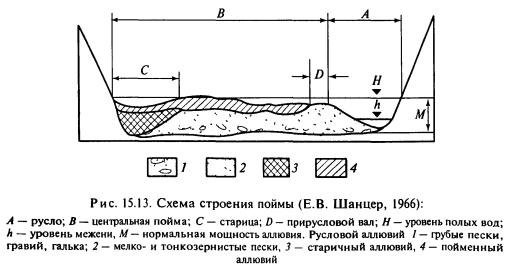
Figure 3: Diagram of a Floodplain's Structure
Chamber
Cartographic Methods for terrain analysis
In office conditions, cartographic methods play a significant role in terrain analysis. Topographic maps of various scales provide extensive information about the terrain. Based on the features of hypsometry, positive and negative landforms can be distinguished, often corresponding to positive and negative structural forms, respectively. Slopes of longitudinal profiles of river channels and terraces are measured on maps, their forms are determined, and the overall pattern of the erosion network and the morphology of valleys in specific areas are studied. The meander pattern, delta shapes, deformations, and more can be examined. Information about recent tectonic movements, fault structures, and fold structures can be obtained from the erosion network pattern, coastal and lakeshore contours, and individual landform shapes.
In the office-based study of terrain, the compilation and analysis of geological-geomorphological profiles are of great importance. These profiles enable the identification and correlation—mutual linkage—of extensive planation surfaces of different genesis and age, river and marine terraces, across large areas.
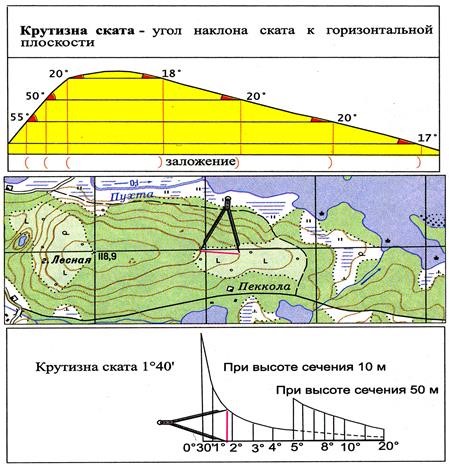
Figure 4: Determining Slope Steepness Using a Topographic Map
Methods Based on Digital Elevation Models (DEM)
A Digital Elevation Model (DEM) is a type of three-dimensional terrain model that contains data only about elevation (without trees, buildings, and other objects). In recent years, DEMs are created after processing images obtained from unmanned aerial vehicles (UAVs).
To create a DEM, numerous elevation points with known geodetic coordinates are used. The digital model is constructed based only on points classified as land surface elevation points. Each elevation is determined using an elevation interpolation rule, ensuring a detailed digital terrain model with varying elevations between elevation points.
The purpose of a digital elevation model is to obtain information about the terrain with a specified level of accuracy and detail for a designated area. It is used in various applications, including:
- Displaying terrain for creating and updating digital topographic maps and plans of various scales.
- Creating thematic and specialized maps and plans for specific purposes.
- Hydrodynamic modeling of terrain flooding.
- Building a three-dimensional geological model.
- Radar (radar) interferometry.
- Creating navigation maps with different levels of detail and address information.
- Creating topographic plans.
- Predicting landscape processes.
- Land use planning.
- Construction of roads, highways, and interchanges.
- Environmental protection tasks, including modeling ecological situations.
- Studying and quantitatively assessing the current state of the natural environment.
- Land management and cadastral work.
- Creating digital terrain models for planning and developing telecommunications networks.
- Determining the depth of groundwater.
Currently, a large number of satellites are launched to obtain high and very high-resolution images, and technical and software tools are developed and used to create DEMs.
Data from satellites can be obtained more quickly, as they may already be available in the operator's archive. Aerial photographs taken from an aircraft or UAVs are also used.
DEMs obtained through stereophotogrammetric processing of satellite images and aerial photographs are characterized by high accuracy and informativeness.
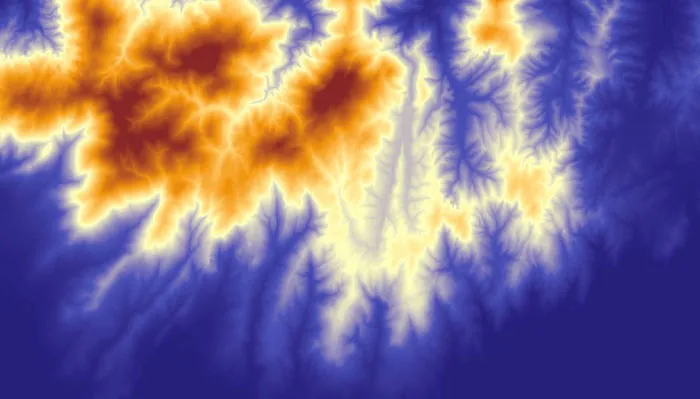
Figure 5: Example of a Digital Elevation Model (DEM)
With the help of new Geographic Information System (GIS) technology, unlike its predecessor - conventional "paper" maps, digital data can be processed, and a spatial three-dimensional digital terrain model that closely approximates reality can be created.
GIS packages typically include specialized tools for visualizing DEMs, allowing for the display and/or printing of two- and three-dimensional terrain images (block diagrams) with the ability to change the viewing position in terms of direction (by rotating the terrain block diagram around the vertical axis) and height. They also allow overlaying any other information layer from the database onto the terrain surface (provided that the raster size matches), as well as zooming in or out of the image.
The set of spatial analysis functions for digital elevation models in different GIS packages varies significantly. The construction of a digital elevation model is based on a structural interpolation model in which reference points are set on structural lines of the terrain - watersheds and thalwegs. In this case, to determine the elevation of the topographic surface at any point not coinciding with the reference points, only data from the reference points located on the same slope are used, which excludes the distortion of the relief's morphology, even when using the simplest interpolation methods.
Morphometric Methods for terrain analysis
In the field of terrain analysis, morphometric methods are widely applied. These methods rely on quantitative characteristics of the terrain that can be obtained through the analysis of topographic maps, geomorphological profiles, satellite and aerial imagery, and, more recently, digital elevation models (DEMs). The goal of morphometric methods is to identify tectonic deformations based on exogenous landforms, their morphology, and distribution over an area.
The suite of morphometric methods includes, first and foremost, the determination of the degree of horizontal and vertical terrain dissection, especially in plain regions.
Horizontal dissection is determined by the density of all linear erosion forms of permanent and ephemeral watercourses, measured by the quantity of forms or by the total length of these forms per unit area.
Vertical dissection of the terrain is determined by the difference in elevations (maximum and minimum) of the Earth's surface on individual plots, as well as by the depths of erosion incisions relative to watersheds. Areas experiencing uplift exhibit a higher degree of both horizontal and vertical terrain dissection compared to areas undergoing subsidence or remaining stable. Both methods are employed to detect various deformations, primarily in closed plain regions.
Another technique used in morphometric analysis involves constructing morphohypsometric maps. This entails generalizing a topographic map, removing small landforms created by linear erosion, and reconstructing the original terrain surface, where the position reflects tectonic deformations such as uplift or subsidence. Smooth lines, known as morphohypsometric curves, connect positive elevations of individual contour lines, revealing ovals of tectonic uplift. Lower values of morphohypsometric curves delineate negative structures. Maps of valleys of various orders also enable the identification of areas with different tectonic motion patterns. Areas experiencing recent uplifts exhibit a rapid transition from simpler erosion forms, considered lower-order forms like runoff basins and streams, to larger, higher-order forms like rivers. In areas undergoing subsidence, the increase in the order of valleys occurs more slowly.
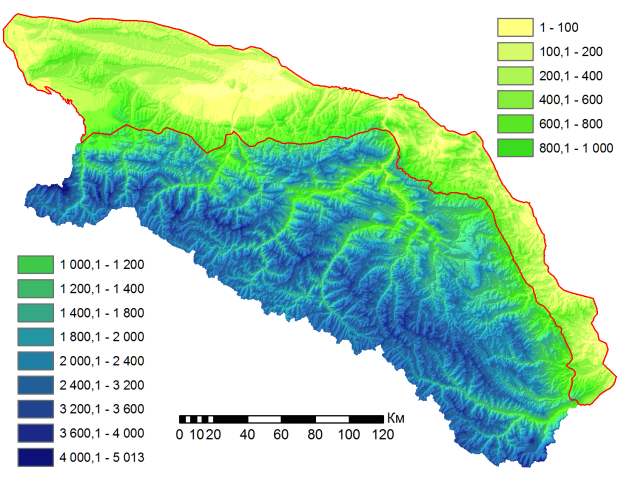
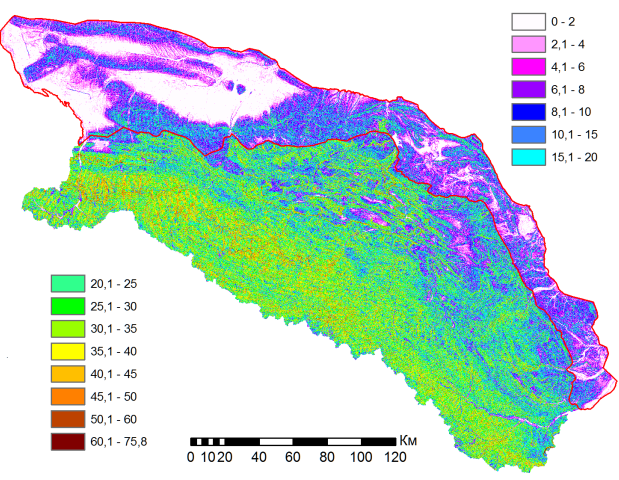
Fig. 6 Distribution of elevations in the Northeastern Caucasus region
Bathymetric Method for terrain analysis
The bathymetric method is employed in the study of underwater topography in seas and oceans. It is based on the analysis of existing seafloor maps and the creation of new ones using techniques such as echosounding, seismic acoustics, seismostratigraphy, and drilling. Underwater relief is also captured through photographic surveys using deep-sea photography equipment. A significant portion of the seafloor features, both large and small, comprises either tectonic features (elevations – uplifts, basins – depressions) or volcanic formations. Analyzing the depths of the seabed allows for more cost-effective placement of pipelines or internet cables encircling our planet.
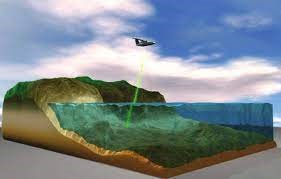
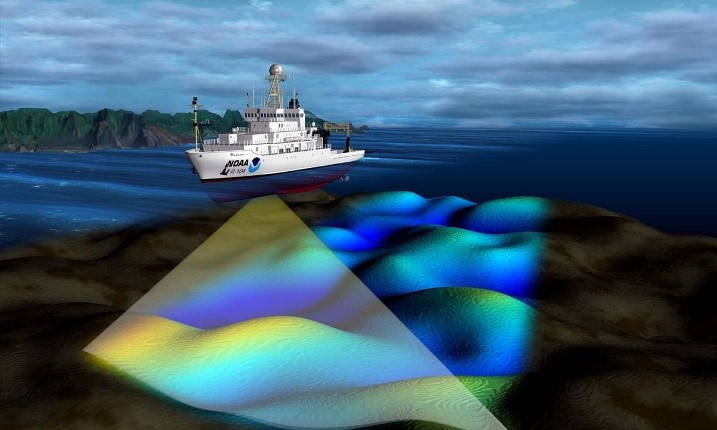
Fig. 7,8 Bathymetric Method

Fig. 9 Submarine Internet Map from 2014
Paleogeomorphological Method for terrain analysis
The paleogeomorphological method studies ancient, including buried, topography. It allows for the examination of the history of landscape development, the determination of stages of relief formation and sediment accumulation, the reconstruction of the sequence of changes in continental and marine conditions, and the restoration of landforms destroyed by denudation, such as planation surfaces, river valleys, and more. Buried topography is important for prospecting valuable minerals and conducting engineering-geological surveys, taking it into account when constructing various structures. It is studied using geophysical methods and drilling. The result of this method is a geomorphological map of the area.
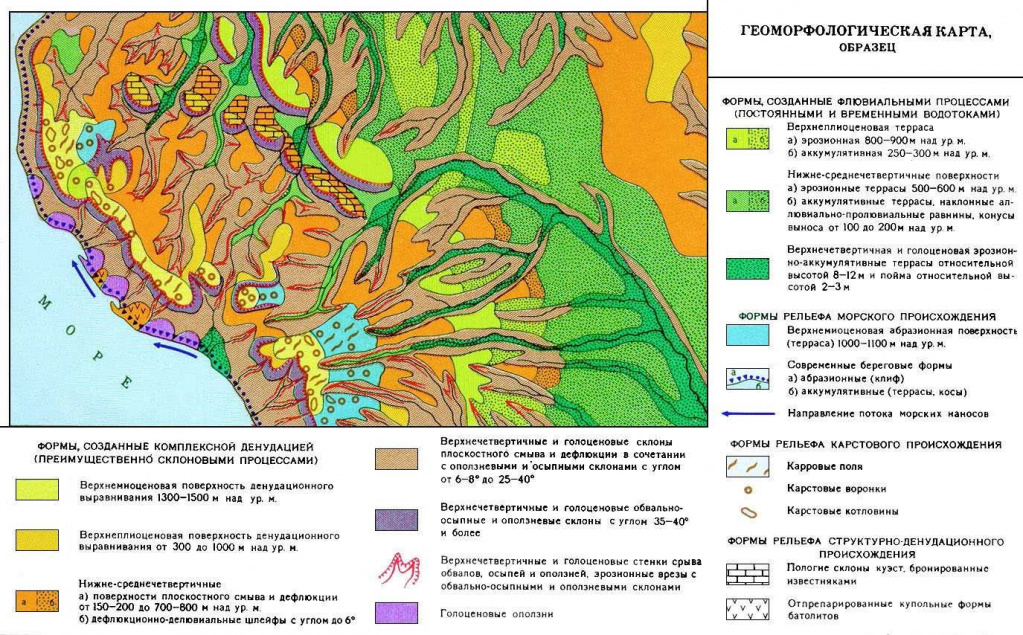
Fig. 10 Geomorphological Map of the Area
Comparative Planetary Method for terrain analysis
The comparative planetary method is based on comparing the landforms of the Moon, Mars, and other planets with similar features on Earth. This method, utilizing images obtained by automated spacecraft, has not only allowed for the identification of landforms on other planets similar to those on Earth but has also led to the discovery of previously unknown features on Earth, such as ring structures. In recent times, modeling various types of Earth's topography has been widely applied.
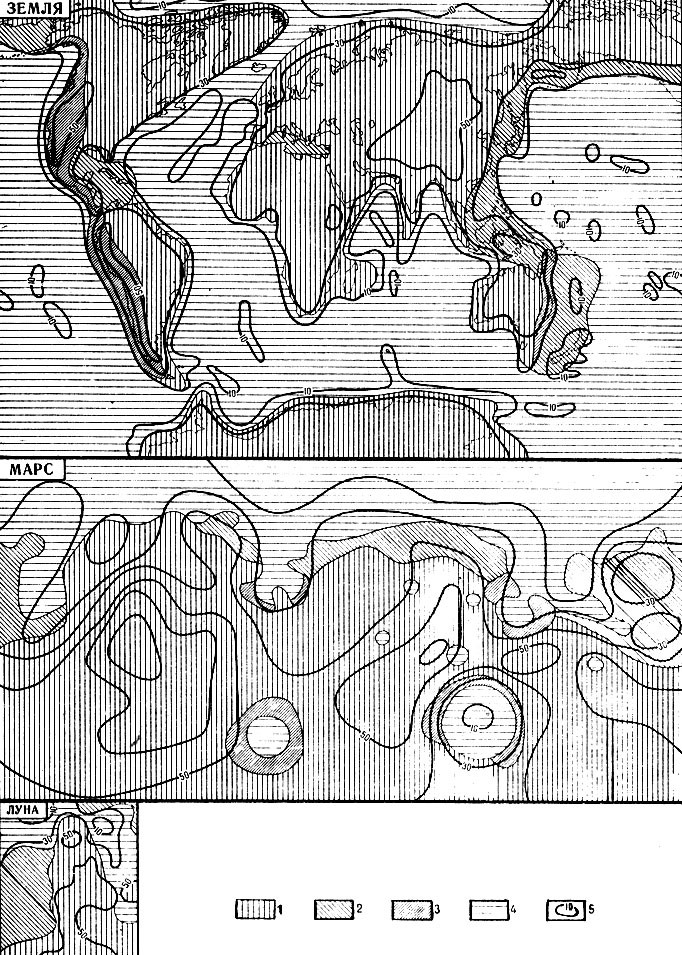
Fig. 11 Comparison of Earth's Surface Relief and the Surface of Mars
Conclusion
This article has clearly demonstrated that there are various methods for analyzing the terrain relief, each designed for specific purposes.
The bathymetric method, based on the obtained information, allows for the laying of new pipelines for transporting gas, oil, or other liquid and gaseous minerals, as well as for the installation of new internet cables.
The comparative planetary method provides insights into the origin of our planet and the solar system. By comparing images of Mars and Earth, similarities in relief structures can be observed, leading to several conclusions.
Paleogeomorphological analysis is essential for the exploration and development of valuable mineral deposits based on the location of various forms of ancient terrain.
All of the above-mentioned methods for studying and analyzing relief, when conducted in office conditions, utilize computer technologies, including GIS technologies.



